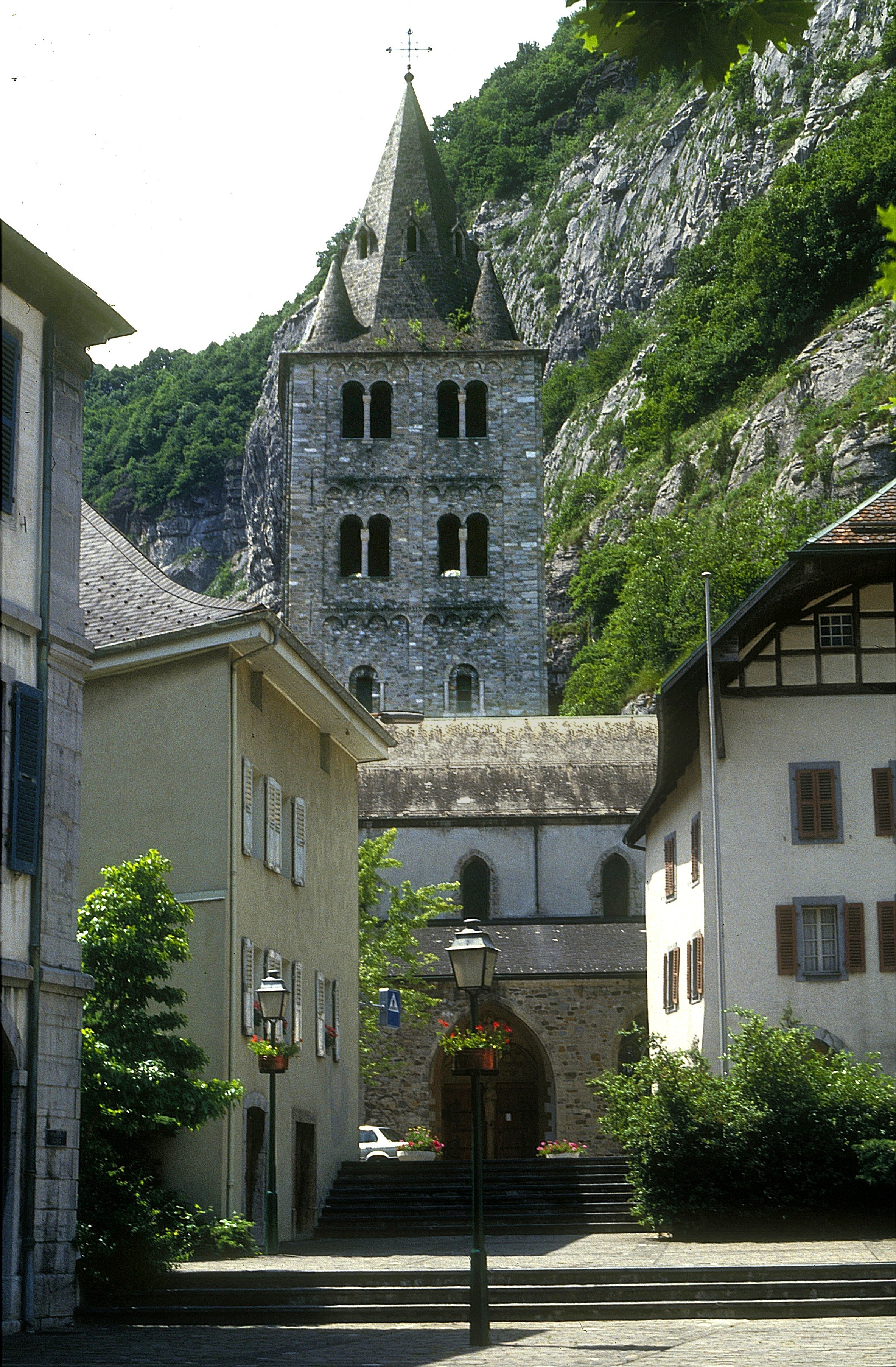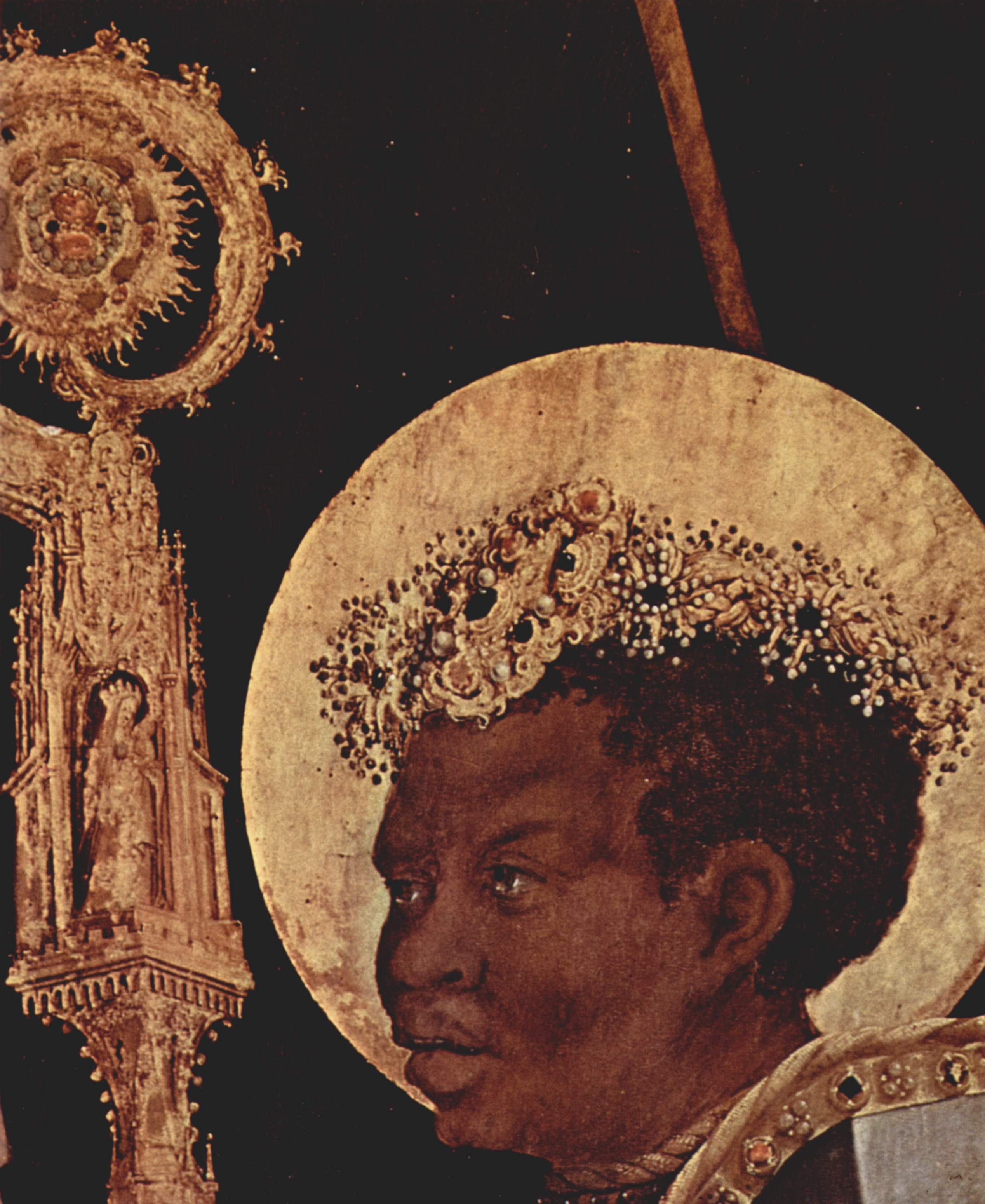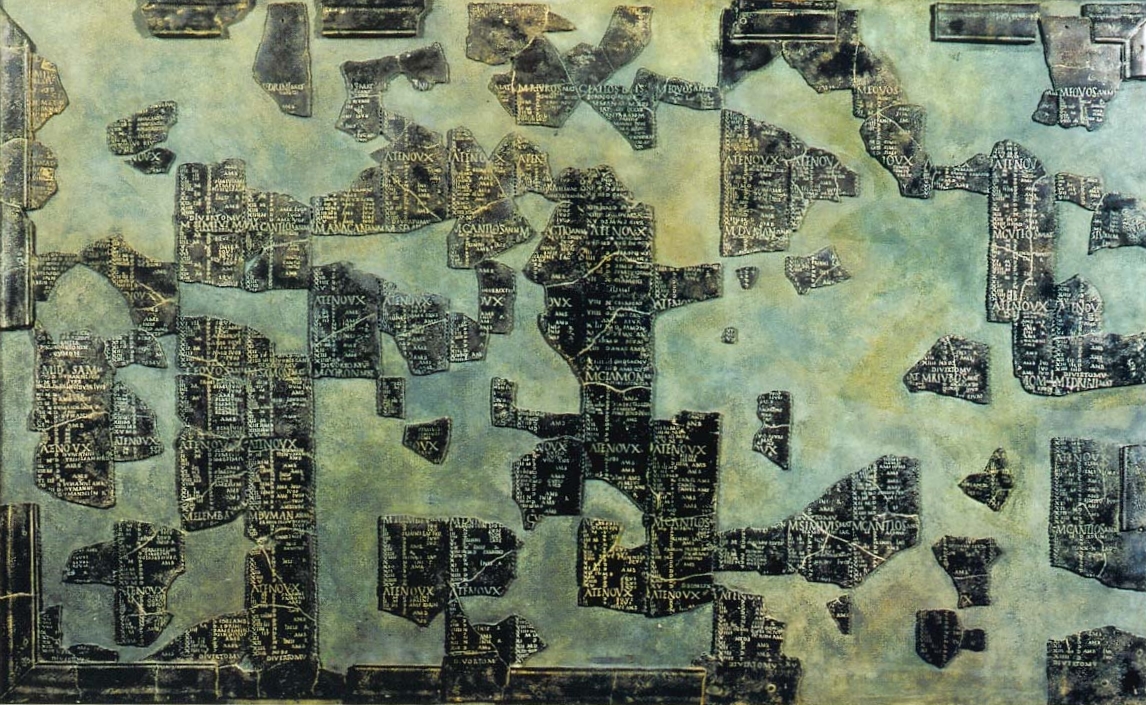|
Agaunum
Agaunum was an outpost in Roman Switzerland, predecessor of the modern city of Saint-Maurice in the canton of Valais, southwestern Switzerland. It was used by the Roman Empire for the collection of the ''Quadragesima Galliarum''. In Christian tradition, Agaunum is known as the place of martyrdom of the Theban Legion. Etymology The word ''Agaunum'' derives from Gaulish ''acaunum'', meaning "saxum, stone, whetstone". The word ''acauna'' also appears in compound nouns relating to "stone", for instance, as related by Pliny. Ultimately, the word stems from the Proto-Indo-European root ''*h2ekmōn'', meaning "stone" in several of the daughter languages. The name is also attested as a deity called ''Acauno'' or ''Acaunus'', leading scholars to argue that in this location there was a probable cult to a river deity. The name ''Agaunum'' is probably at the origin of French toponym ''Agonès'', a commune in southern France.Barruol, Guy. "Une dédicace inédite à Agonès (Hérault)". In ... [...More Info...] [...Related Items...] OR: [Wikipedia] [Google] [Baidu] |
Theban Legion
The Theban Legion (also known as the Martyrs of Agaunum) figures in Christian hagiography as a Roman legion from Egypt—"six thousand six hundred and sixty-six men"—who converted en masse to Christianity and were martyred together in 286, according to the hagiographies of Saint Maurice, the chief among the Legion's saints. Their feast day is held on September 22. The account According to Eucherius of Lyon, c. 443–450, the Legion was the garrison of the city of Thebes in Egypt. The Legion were quartered in the East until the emperor Maximian ordered them to march to Gaul, to assist him against the rebels of Burgundy. The Theban Legion was commanded in its march by Saint Maurice (Mauritius), Candidus, Innocent, and Exuperius, all of whom are venerated as saints. At Saint-Maurice, Switzerland, then called Agaunum, the orders were given—since the Legion had refused to sacrifice to the Emperor—to " decimate" it by putting to death a tenth of its men. This act ... [...More Info...] [...Related Items...] OR: [Wikipedia] [Google] [Baidu] |
Saint Maurice
Saint Maurice (also Moritz, Morris, or Mauritius; ) was an Egyptian military leader who headed the legendary Theban Legion of Rome in the 3rd century, and is one of the favorite and most widely venerated saints of that martyred group. He is the patron saint of several professions, locales, and kingdoms. Biography Early life According to the hagiographical material, Maurice was an Egyptian, born in AD 250 in Thebes, an ancient city in Upper Egypt that was the capital of the New Kingdom of Egypt (1575-1069 BC). He was brought up in the region of Thebes (Luxor). Career Maurice became a soldier in the Roman army. He rose through the ranks until he became the commander of the Theban legion, thus leading approximately a thousand men. He was an acknowledged Christian at a time when early Christianity was considered to be a threat to the Roman Empire. Yet, he moved easily within the pagan society of his day. The legion, entirely composed of Christians, had been called from Thebes ... [...More Info...] [...Related Items...] OR: [Wikipedia] [Google] [Baidu] |
Laus Perennis
Perpetual prayer (Latin: ''laus perennis'') is the Christian practice of continuous prayer carried out by a group. History The practice of perpetual prayer was inaugurated by the archimandrite Alexander (died about 430), the founder of the monastic Acoemetae or "vigil-keepers". ''Laus perennis'' was imported to Western Europe at St. Maurice's Abbey in Agaunum, where it was carried on, day and night, by several choirs, or ''turmae'', who succeeded each other in the recitation of the divine office, so that prayer went on without cessation. Called the ''Akoimetoi'' ("Sleepless Ones"), these monks prayed "a monastic round of twenty-four offices to fill every hour." The inauguration of ''laus perennis'' at Agaunum circa 515 was the occasion of a solemn ceremony, and of a sermon by St. Avitus which survives. The "custom of Agaunum", as it came to be called, spread over Gaul, to Lyons, Châlons, the Abbey of Saint Denis, to Luxeuil, Saint-Germain at Paris, Saint Medard at Soisson ... [...More Info...] [...Related Items...] OR: [Wikipedia] [Google] [Baidu] |
Saint-Maurice, Switzerland
Saint-Maurice is a city in the Swiss canton of Valais and the capital of the district of Saint-Maurice. On 1 January 2013, the former municipality of Mex merged into the municipality of Saint-Maurice.Nomenklaturen – Amtliches Gemeindeverzeichnis der Schweiz accessed 9 February 2013 Saint-Maurice is the site of the outpost of Agaunum and the 6th-century Abbey of Saint-Maurice d'Agaune. The city ... [...More Info...] [...Related Items...] OR: [Wikipedia] [Google] [Baidu] |
Sigismund Of Burgundy
Sigismund ( la, Sigismundus; died 524 AD) was King of the Burgundians from 516 until his death. He was the son of king Gundobad and Caretene. He succeeded his father in 516. Sigismund and his brother Godomar were defeated in battle by Clovis's sons, and Godomar fled. Sigismund was captured by Chlodomer, King of Orléans, where he was kept as a prisoner. Later he, his wife and his children were executed. Godomar then rallied the Burgundian army and won back his kingdom. Life Sigismund was a student of Avitus of Vienne, the Chalcedonian bishop of Vienne who converted Sigismund from the Arian faith of his Burgundian forebears. Sigismund was inspired to found a monastery dedicated to Saint Maurice at Agaune in Valais in 515. The following year he became king of the Burgundians. Sigismund's conflict with Bishop Apollinaris Sigismund came into conflict with Apollinaris of Valence over the rules regarding marriage. The king's treasurer, Stephen, was living in flagrant incest. Th ... [...More Info...] [...Related Items...] OR: [Wikipedia] [Google] [Baidu] |
Theodore Of Octodurum
:''See Theodulus, Théodule, Saint Theodore for disambiguation.'' Saint Theodore of Octodurum (also ''of Sion'', ''of Grammont''; German ''Theodor von Sitten'', locally '' Joder''; also known as Theodulus, French ''Théodule'', Latin ''Theodolus Sedunensis'' etc.; 4th century) is the first known bishop of Octodurum, Alpes Poeninae province (present-day Martigny, Valais, Switzerland). He is the patron saint of Valais and of the Walser. His feast day is 16 or 26 August."Theodor (Teodul) von Sitten" in: Johann Evangelist Stadler (ed.), ''Stadlers Vollständiges Heiligen-Lexikon'' (1858–1882). He is known to have participated in the Council of Aquileia in 381, his presence bein ... [...More Info...] [...Related Items...] OR: [Wikipedia] [Google] [Baidu] |
Bishop Of Sion
The Diocese of Sion ( la, Dioecesis Sedunensis, french: Diocèse de Sion, german: Bistum Sitten) is a Catholic ecclesiastical territory in the canton of Valais, Switzerland. It is the oldest bishopric in the country and one of the oldest north of the Alps. The history of the Bishops of Sion, of the Abbey of St. Maurice of Valais as a whole are inextricably intertwined. History Early history The see was established at Octodurum, now called Martigny, the capital of the Roman province of Alpes Poeninae. The first authentically historical bishop was Saint Theodore/Theodolus (died in 391), who was present at the Council of Aquileia in 381. He founded the Abbey of Saint-Maurice, with a small church in honor of Saint Maurice, martyred there c. 300, when he united the local hermits in a common life, thus beginning the Abbey of Saint-Maurice, the oldest north of the Alps. Theodore rebuilt the church at Sion, which had been destroyed by Emperor Maximinus at the beginning of the 4th ce ... [...More Info...] [...Related Items...] OR: [Wikipedia] [Google] [Baidu] |
Decimation (Roman Army)
Decimation ( la, decimatio; ''decem'' = "ten") was a form of Roman military discipline in which every tenth man in a group was executed by members of his cohort. The discipline was used by senior commanders in the Roman army to punish units or large groups guilty of capital offences, such as cowardice, mutiny, desertion, and insubordination, and for pacification of rebellious legions. The word ''decimation'' is derived from Latin meaning "removal of a tenth". The procedure was an attempt to balance the need to punish serious offences with the realities of managing a large group of offenders. Procedure A cohort (roughly 480 soldiers) selected for punishment by decimation was divided into groups of ten. Each group drew lots ( sortition), and the soldier on whom the lot of the shortest straw fell was executed by his nine comrades, often by stoning, clubbing, or stabbing. The remaining soldiers were often given rations of barley instead of wheat (the latter being the standard sol ... [...More Info...] [...Related Items...] OR: [Wikipedia] [Google] [Baidu] |
Roman Switzerland
The territory of modern Switzerland was a part of the Roman Republic and Empire for a period of about six centuries, beginning with the step-by-step conquest of the area by Roman armies from the 2nd century BC and ending with the Fall of the Western Roman Empire in the 5th century AD. The mostly Celtic tribes of the area were subjugated by successive Roman campaigns aimed at control of the strategic routes from Italy across the Alps to the Rhine and into Gaul, most importantly by Julius Caesar's defeat of the largest tribal group, the Helvetii, in the Gallic Wars in 58 BC. Under the ''Pax Romana'', the area was smoothly integrated into the prospering Empire, and its population assimilated into the wider Gallo-Roman culture by the 2nd century AD, as the Romans enlisted the native aristocracy to engage in local government, built a network of roads connecting their newly established colonial cities and divided up the area among the Roman provinces. Roman civilization began ... [...More Info...] [...Related Items...] OR: [Wikipedia] [Google] [Baidu] |
Gaulish Language
Gaulish was an ancient Celtic language spoken in parts of Continental Europe before and during the period of the Roman Empire. In the narrow sense, Gaulish was the language of the Celts of Gaul (now France, Luxembourg, Belgium, most of Switzerland, Northern Italy, as well as the parts of the Netherlands and Germany on the west bank of the Rhine). In a wider sense, it also comprises varieties of Celtic that were spoken across much of central Europe ("Noric"), parts of the Balkans, and Anatolia (" Galatian"), which are thought to have been closely related. The more divergent Lepontic of Northern Italy has also sometimes been subsumed under Gaulish. Together with Lepontic and the Celtiberian spoken in the Iberian Peninsula, Gaulish helps form the geographic group of Continental Celtic languages. The precise linguistic relationships among them, as well as between them and the modern Insular Celtic languages, are uncertain and a matter of ongoing debate because of their sparse at ... [...More Info...] [...Related Items...] OR: [Wikipedia] [Google] [Baidu] |
Valais
Valais ( , , ; frp, Valês; german: Wallis ), more formally the Canton of Valais,; german: Kanton Wallis; in other official Swiss languages outside Valais: it, (Canton) Vallese ; rm, (Chantun) Vallais. is one of the 26 cantons forming the Swiss Confederation. It is composed of thirteen districts and its capital and largest city is Sion. The flag of the canton is made of thirteen stars representing the districts, on a white-red background. Valais is situated in the southwestern part of the country. It borders the cantons of Vaud and Bern to the north, the cantons of Uri and Ticino to the east, as well as Italy to the south and France to the west. It is one of the three large southern Alpine cantons, along with Ticino and the Grisons, which encompass a vast diversity of ecosystems. It is a bilingual canton, French and German being its two official languages. Traditionally, the canton is divided into Lower, Central, and Upper Valais, the latter region constituting the Ge ... [...More Info...] [...Related Items...] OR: [Wikipedia] [Google] [Baidu] |
Burgundians
The Burgundians ( la, Burgundes, Burgundiōnes, Burgundī; on, Burgundar; ang, Burgendas; grc-gre, Βούργουνδοι) were an early Germanic tribe or group of tribes. They appeared in the middle Rhine region, near the Roman Empire, and were later moved into the empire, in the western Alps and eastern Gaul. They were possibly mentioned much earlier in the time of the Roman Empire as living in part of the region of Germania that is now part of Poland. The Burgundians are first mentioned together with the Alamanni as early as the 11th panegyric to emperor Maximian given in Trier in 291, and referring to events that must have happened between 248 and 291, and they apparently remained neighbours for centuries. By 411 a Burgundian group had established themselves on the Rhine, between Franks and Alamanni, holding the cities of Worms, Speyer, and Strasbourg. In 436, Aëtius defeated the Burgundians on the Rhine with the help of Hunnish forces, and then in 443, he re-s ... [...More Info...] [...Related Items...] OR: [Wikipedia] [Google] [Baidu] |







